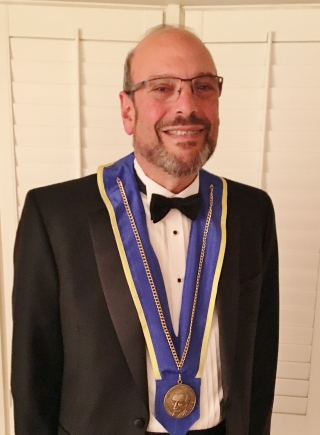
Introduction to Teaching Climate Change in Culinary Classrooms
06 September 2022Teaching the subject of climate change is like teaching students vegetable cookery – they might not like vegetables but need to know how to prepare them.
By Adam Weiner, JD, CFSE
Feedback & comments: This email address is being protected from spambots. You need JavaScript enabled to view it.
I published my first 50 Minute Classroom article in January 2009 and have written nearly 140 articles since then. In each of them, I tried to avoid controversial topics. The time has come for me to address a topic that may cause controversy. I want to provide information on how and why you should teach global climate change in a culinary context.
As I stated above, this may be considered a controversial issue in some places and I want to bring up two points that should hopefully quell a few raised eyebrows from your students, their families, or even your administration.
- In September 2020, Senate Majority Leader Mitch McConnell stated, “I concur that it [climate change] is happening and it is a problem.”
- On December 2020, Republican senators John Barrasso of Wyoming and John Kennedy of Louisiana had written a bipartisan energy bill that amongst other things restricted hydrofluorocarbon, which contributes to ozone layer depletion and global warming. The bill also restored substantial power to the Environment Protection Agency which had been taken away by the courts, the President, and Congress. The bill became part of the stimulus package signed by former President Trump.
I am not an environmental expert. I grew up in a chemical laboratory: my father was one of the first registered chemical engineers in the state of California. I watched as he helped companies comply with the environmental laws in the state, but that doesn’t make me an expert. While writing these articles, I am turning to an expert, my daughter Stephanie. What makes her perfect for working with me on these articles is that she has a science, foodservice and teaching background.
- Stephanie graduated from UC Santa Barbara in 2012 with a Bachelor of Arts in Environmental Studies.
- She worked for several years as an outdoor instructor teaching students from pre-K through college about the environment.
- She obtained a Single Subject Science Credential from Sonoma State University in 2018.
- She has taught environmental science for over four years in grades 6 through 12.
- Al Gore brought her into his Climate Reality Project in 2020 and she is the leader of the San Diego Chapter K-12 education pod. In June 2022, she was invited to the regional meeting for the Climate Reality Project hosted by former Vice President Gore.
- She grew up in a commercial kitchen working both FOH and BOH and was led on many catering events. She did this not only for me but with other chefs and organizations as well. She understands the realities of the foodservice industry.
Stephanie has two suggestions for beginning to plan for teaching global climate change. One is pre-class preparation. According to Stephanie, no matter the lesson there are a few common considerations to address before starting your lesson plans. Whether you are teaching seafood sustainability, climate change or composting, you must consider these points in lesson planning:
- Who, if anyone, you should notify before teaching the subject? What about the administration, parents or students?
- Are there other connections on an interdisciplinary basis? Good places to start are science, chemistry and earth science classes.
- How to explain to your students that the culinary field has an impact on the issue being taught?
She also advices asking yourself these five questions when planning to teach any issues related to the environment:
- What is the environmental issue being discussed?
- What are its effects?
- How can your students personally and positively affect the issue?
- How best should you teach each particular issue?
- Why should your students care?
I recently read the book “After Cooling” by Eric Dean Wilson. One of the book’s key points is that most people, including your students, have a knowledge of the popular talked about environmental issues ranging from overfishing, to climate change affecting the supply of chocolate, to weather issues. What they do not realize is that climate change’s effects (as well as most environmental issues) have a greater impact on less advantaged people. Some, if not many, of whom make up the high school and community college culinary classes. In other words, your students may be most severely and adversely affected by climate change and environmental issues.
In the upcoming months, Stephanie and I will go into detail on particular issues you should consider including in your curriculum. Although Stephanie and I are still considering what issues to discuss, the tentative list includes subjects ranging from climate change to how to use tacos to teach environmental issues.
Finally, I know many teachers, administrators, parents and students will be against teaching any of these issues in your class. I have two final points:
- You already teach science. Baking is science. Every time your students make a cookie they are actively involved in science.
- It does not matter whether your students believe in global climate change or other environmental issues. What matters is they understand issues and can think and decide for themselves. This is not unique for you as a teacher or for your students. A student may not like vegetables but still needs to learn how to cook them correctly.
Adam Weiner, JD, CFSE, has been a culinary instructor in the San Francisco Bay Area for more than 17 years.
